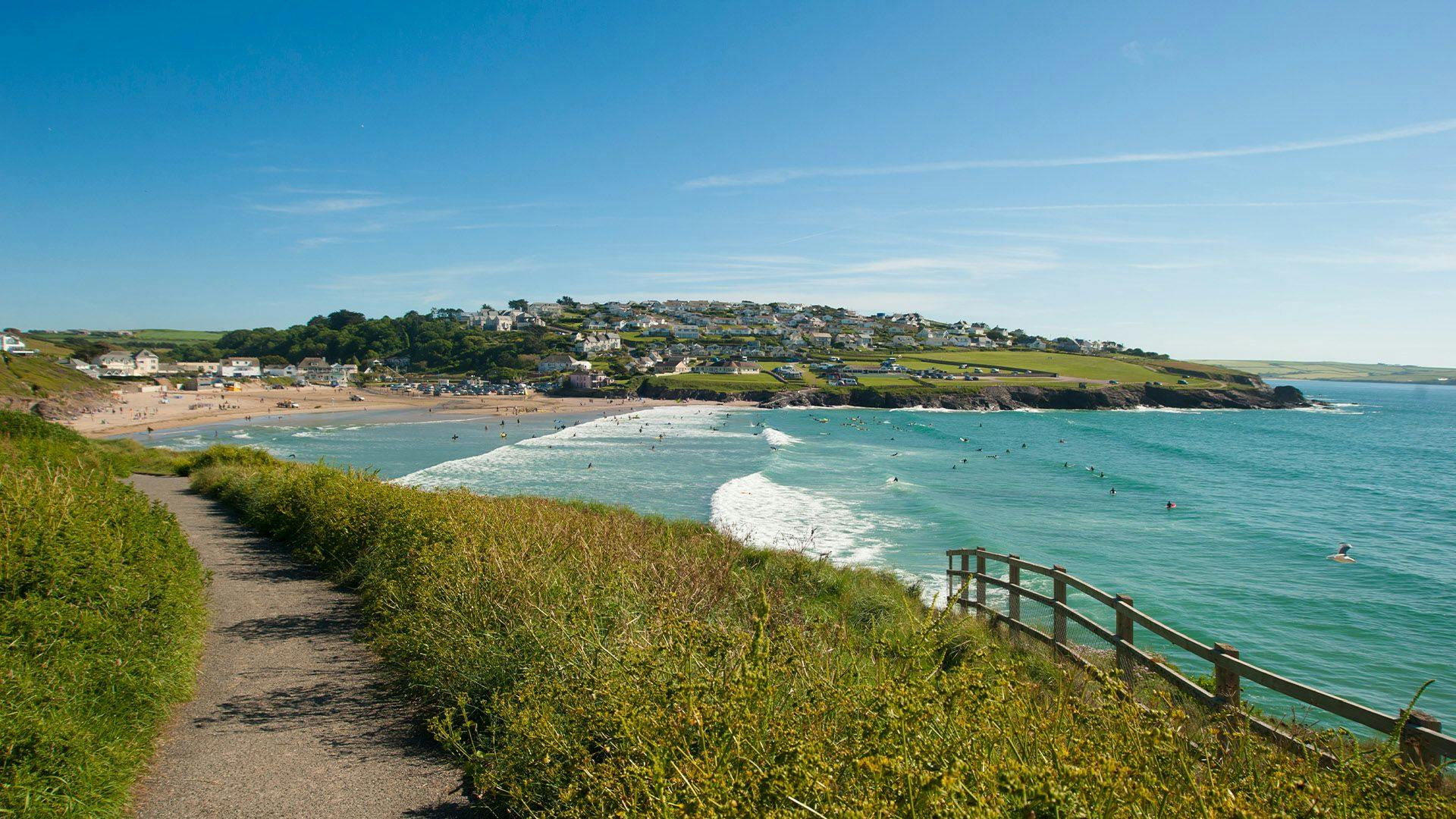The north Cornish coast is one of the UK's hidden treasures. Being slightly remote, it has retained its historic charms and provides an ideal location to slow down and take things easy.
We stayed three nights in Polzeath, which afforded us a delightful blend of history, natural beauty, and culinary delights.
This charming coastal village has a rich maritime history and was once a hub for local fishing. Today, it is renowned for its stunning sandy beach, a haven for surfers and families alike, with its golden sands and rolling waves - although for us, the waves were more gliding than rolling! Flat as a pancake was a phrase used!
The local food scene is vibrant, with many restaurant featuring fresh seafood caught daily We of course had to sample the traditional Cornish pasties, along with some Cornish fudge and ice cream!
One morning we took a walk along the coastal path to the headland and then onto the Rumps - an interesting collection of geological formations that provide a stunning coastal vista.
Another day saw us visiting the small town of Rock in order to catch the ferry over to Padstow - that once quite fishing village, now known for a certain famous TV chef's restaurant. In fact Rick Stein seems to have taken over the village with several other establishments besides the restaurant.
After Padstow we headed to a spectacular sight that until recently was another one of Cornwall's hidden gems. However, thanks to the Instagram era, it's become rather well known as one of those selfie spots beloved by us all that have a phone! The place is St. Nectan's Waterfall is located in St. Nectan's Glen, a picturesque wooded valley in Trethevy, just outside Tintagel. The waterfall is the most prominent and beautiful feature of the glen, and it's a truly magnificent sight. The River Trevillet cascades over rocks for 60 feet (18 meters) before plunging through a hole in the rocks and into a crystal-clear basin below.
The waterfall is named after Saint Nectan, a 6th-century Celtic saint who is said to have lived as a hermit in the glen. Legend has it that he built his hermitage cell at the head of the waterfall and would ring a silver bell to warn ships of the dangerous rocks at the mouth of the nearby Rocky Valley. Today, St. Nectan's Kieve (Kieve being a Cornish word for a hollowed-out rock) is considered a sacred site by many. Visitors from all over the world come to hang ribbons on the branches of the trees around the waterfall, which is believed to have healing powers.
Of course, being a stone's throw away from Tintagel, we had to of course, visit the famous castle - although there is not much left of it! The dramatic cliffs upon which the ruins sit provide most of the spectacle.
The site itself has evidence of settlements dating back to the Roman era, but the dramatic castle ruins you see today are mainly from the 13th century. These were built by Richard, 1st Earl of Cornwall, during the High Middle Ages. The castle fell into ruin over the centuries and became a romantic spot for artists and writers, particularly during the Victorian era. Tintagel is of course associated with the mythical wizard Merlin and this association was mainly brought about in the 12th century by Geoffrey of Monmouth in his book, Historia Regum Britanniae (History of the Kings of Britain). Geoffrey placed Tintagel as the site of Arthur's conception, attributing it to Merlin's magic.
While in Polzeath, we were able to witness some fantastic sunsets - it really did remind us of some of the beach sunsets we experienced on our World Trip, but there was something about these ones at a British coast that made them rather special.







Comments
Post a Comment